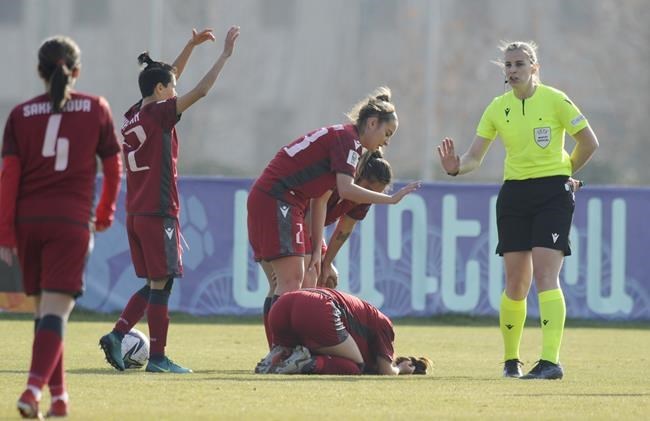Referees will announce the results of video reviews at the Women's World Cup in Australia and New Zealand, following a practice first used earlier this year at the FIFA Club World Cup in Morocco and the Men's U-20 World Cup in Argentina.
FIFA says the objective is to help fans in the stadium and viewers in TV understand what is going on with referees announcing the play in question, the outcome and the reason why.
Once the decision is made, the referee will make the announcement in English through a microphone linked to the PA system. It will be the third FIFA competition — and first World Cup — where such announcements are made.
FIFA says match officials will also follow the example of last year's men's World Cup in Qatar in calculating additional time to be added on to each half to reduce time-wasting and extend actual time played.
That means more accurately tracking time taken in substitutions, treatment of injured players, red cards, penalty kicks, goal celebration and video review interventions.
FIFA says games in Qatar averaged 11 additional minutes.
The 32-country Women's World Cup runs across nine host cities in Australia and New Zealand from July 20 to Aug. 20.
The 107 match officials — there are five Canadians among the 33 referees, 55 assistant referees and 19 video match officials — arrived early for a 10-day seminar ahead of the tournament that includes daily classroom and training sessions with players. The officials are also put through their paces in their own tournament, dubbed the Referee Cup, in advance of the actual games.
The match officials will use the same technology used at last year's men's World Cup in Qatar.
That includes installing 12 optical tracking cameras in each of the stadiums, synchronized to track 29 data points of each individual player, 50 times per second, calculating their exact position on the pitch. The 29 collected data points include all limbs and extremities that are relevant for making offside calls.
The match ball also contains a sensor, allowing officials to determine exactly when the ball was played, which helps in offside decisions, and whether the ball was touched at all.
That provides an automated offside alert to officials in the video operations room. They then manually validate the information and inform the referee on the pitch.
Once confirmed, the data used to make the offside decision is generated into a 3D animation that will then be shown on the giant screens in the stadium and made available to broadcast partners. That process takes some 20 to 40 seconds.
The World Cup will allow for five substitutions during the match, with an extra substitution allowed per team for a player suffering from a concussion. A sixth sub will also be allowed during the knockout rounds when extra time comes into play.
---
Follow @NeilMDavidson on Twitter
This report by The Canadian Press was first published July 15, 2023
Neil Davidson, The Canadian Press



